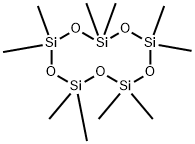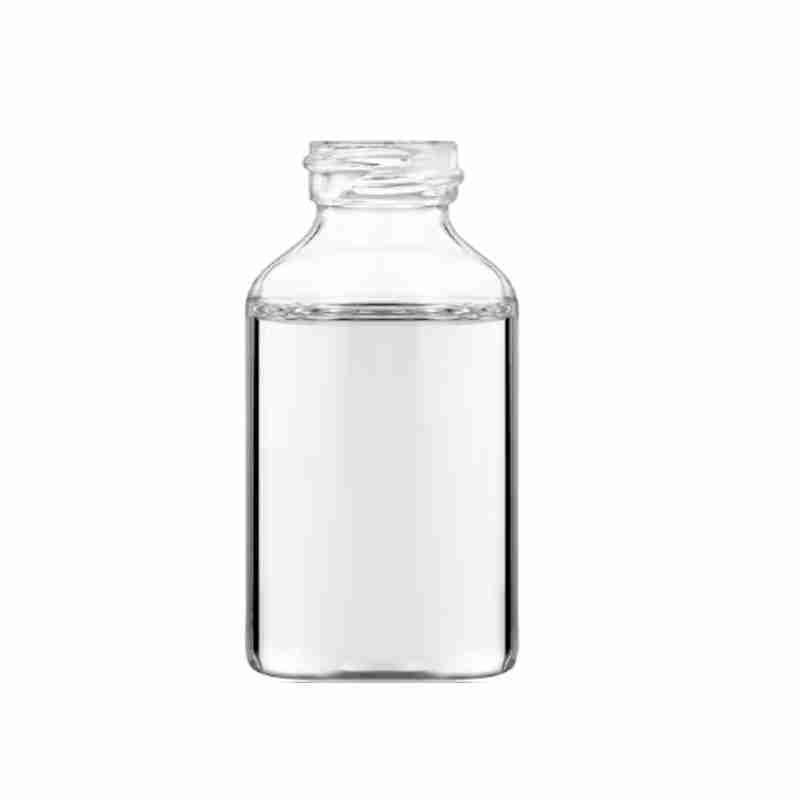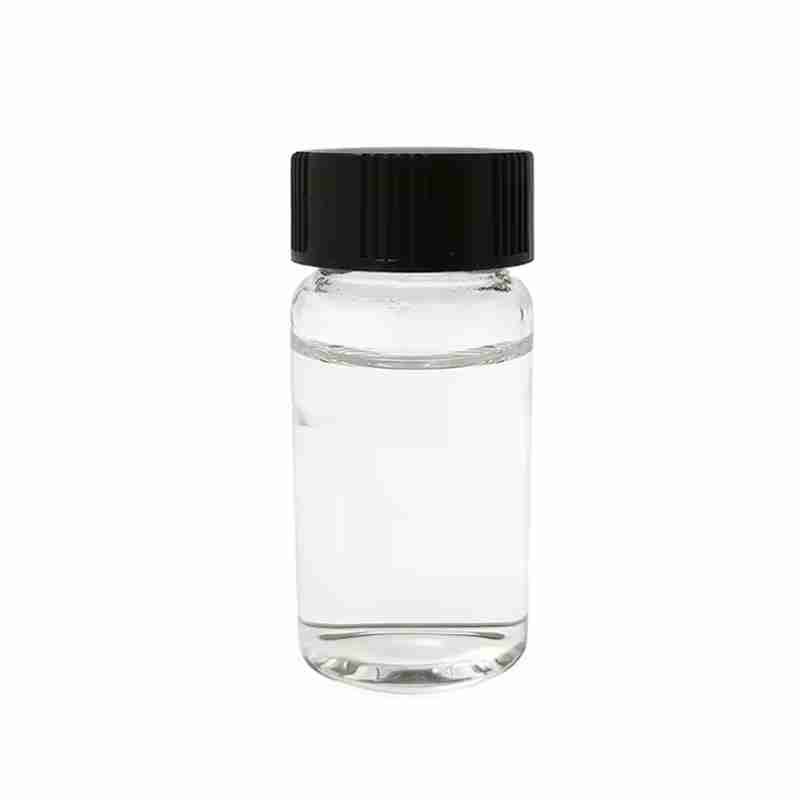Decamethylcyclopentasiloxane CAS #541-02-6
Decamethylcyclopentasiloxane (D 5) is a silicone compound with the molecular formula of [(CH 3) 2SiO] 5. It is a colorless and tasteless liquid with slight volatility.
Cyclopentasiloxane CAS No. 541-02-6, chemical formula C10H30O5Si5, molecular weight 370.77000, Chinese alias decamethylcyclopentasiloxane, liquid, boiling point 90 ??C10 mm Hg(lit.), flash point 162 ??F, density 0.958 g/mL at 25 ??C(lit.), refractive index n20/D 1.396(lit.). Decamethylcyclopentasiloxane (cyclopentasiloxane) is a colorless, odorless, volatile liquid cyclic siloxane, safe and environmentally friendly, and has been widely used in health and beauty products , such as deodorants, antiperspirants, cosmetics, shampoos, body lotions, etc. Good compatibility with alcohol and most other cosmetic solvents.
发送询盘
Decamethylcyclopentasiloxane CAS #541-02-6
| Decamethylcyclopentasiloxane Basic information |
| Product Name: | Decamethylcyclopentasiloxane |
| Synonyms: | CD3770;cyclicdimethylsiloxanepentamer;D3770;siliconsf1202;vs7158;CYCLIC PENTAMER-D5;DECAMETHYLCYCLOPENTASILOXANE;Decamethylcyclopentasiloxane (cyclic monomer)Cyclic Pentamer-D5 |
| CAS: | 541-02-6 |
| MF: | C10H30O5Si5 |
| MW: | 370.77 |
| EINECS: | 208-764-9 |
| Product Categories: | Organometallic Reagents;Organosilicon;Si (Classes of Silicon Compounds);Si-O Compounds;Heterocycles;Intermediates & Fine Chemicals;Pharmaceuticals;Organics;Silicone Series;Siloxanes;541-02-6 |
| Mol File: | 541-02-6.mol |
 |
|
| Decamethylcyclopentasiloxane Chemical Properties |
| Melting point | -44??C |
| Boiling point | 90 ??C/10 mmHg (lit.) |
| density | 0.958 g/mL at 25 ??C (lit.) |
| vapor pressure | 33.2Pa at 25?? |
| refractive index | n20/D?1.396(lit.) |
| Fp | 162???F |
| storage temp. | 2-8??C |
| solubility | <0.0001g/l (calculated) |
| form | Liquid |
| color | Colorless |
| Specific Gravity | 0.959 |
| explosive limit | 0.52-7%(V) |
| Water Solubility | Immiscible with water. |
| Hydrolytic Sensitivity | 1: no significant reaction with aqueous systems |
| Merck | 14,2848 |
| BRN | 1800166 |
| Dielectric constant | 2.5??20?棩 |
| Stability: | Stable. Incompatible with strong oxidizing agents. |
| InChIKey | XMSXQFUHVRWGNA-UHFFFAOYSA-N |
| LogP | 8.07 at 24.6?? |
| CAS DataBase Reference | 541-02-6(CAS DataBase Reference) |
| NIST Chemistry Reference | Decamethylcyclopentasiloxane(541-02-6) |
| EPA Substance Registry System | Decamethylcyclopentasiloxane (541-02-6) |
- 2
- 2-diallylpent-4-en-1-amine
- 4
- 95-16-9
- Ammonium sulfamate
- Benzothiazole
- cas:67889-00-3ح2
- cas:83524-75-8 | pigment black 32
- cas:928836-00-4 | 2
- cas:932745-70-5 | 4
- Chemical Minerals
- Coconut diethanolamide
- Daily Chemicals
- discount
- for sale
- General pvc resin
- hexyl D-glucoside
- in stock
- Lauramidopropyl betaine
- LAURIC ACID MONOETHANOLAMIDE
- Petroleum Additives
- Plasticiser
- Ploymers
- price
- PVC
- quotation
- Raw Materal
- Remove term: Petroleum Additives Petroleum Additive
- SODIUM ETHYL 2-SULFOLAURATE
Related Products
Chemical Name: Ammonium Iron(II) Sulfate
Synonyms: Diammonium iron bis(sulphate); iron (ii) ammonium sulfate
CAS No.: 10045-89-3
Molecular Formula: FeH5NO4S
Molecular Weight: 170.95
Chemical Name: STODDARD SOLVENT
CAS No.: 64742-88-7
Appearance: Colorless or Light Yellow Liquid
Silicone oil, known for its chemical designation as dimethicone or polydimethylsiloxane, is a synthetic polymer with a backbone of alternating silicon and oxygen atoms, creating a highly versatile and stable compound. It is renowned for its exceptional lubricating properties, heat resistance, and non-toxic nature, making it a staple in various industries, including cosmetics, automotive, and aerospace.
This hydrophobic, non-volatile oil is valued for its ability to provide a smooth, non-greasy feel and to form stable emulsions with other ingredients. In personal care products, silicone oil is used to impart a silky texture, reduce friction on the skin, and create a protective barrier against environmental stressors without clogging pores.
Silicone oil’s chemical inertness and resistance to oxidation contribute to its long shelf life and stability in formulations. It is also appreciated for its compatibility with a wide range of substances, allowing for the creation of multifunctional products.
In summary, silicone oil is a reliable and multifaceted ingredient, offering a combination of performance, safety, and sensory benefits. Its use in a variety of applications reflects its versatility and enduring appeal in the marketplace.
Benzothiazoles are a class of chemical compounds characterized by a fused benzene and thiazole ring. They exhibit a broad spectrum of applications, particularly as antioxidants in rubber and plastic industries, enhancing product longevity and performance. Additionally, benzothiazoles serve as key intermediates in the synthesis of pharmaceuticals, contributing to the development of life-saving drugs. Recognized for their stability and reactivity, these compounds are integral to advancing material science and healthcare solutions.
Terpene resin is a type of natural resin derived from terpenes, which are organic compounds found in various plants. It is known for its aromatic properties and is commonly used in the production of fragrances, flavorings, and as a component in adhesives and coatings within the chemical industry. Terpene resin offers a range of benefits, including enhancing the solubility of essential oils and providing a stable base for various applications. Its natural origin makes it a preferred choice for eco-friendly products.
Tetraacetylethylenediamine is a fully acetylated derivative of ethylenediamine, offering a high reactivity as an intermediate in organic synthesis. Its unique structure makes it a critical component in the production of specialty chemicals and pharmaceuticals, ensuring a wide range of applications in the chemical industry.
Chemical Name: Imazalil Sulfate
CAS No.: 58594-72-2
Molecular Formula: C14H14Cl2N2O.H2SO4
Molecular Weight: 395.26
Appearance: Solid
3,4-Ethylenedioxythiophene is a synthetic organic compound characterized by its unique structure that includes a thiophene ring with ethylenedioxy substituents at the 3 and 4 positions. This compound is known for its potential applications in the synthesis of various organic materials, including pharmaceuticals and organic electronic devices such as sensors and solar cells. Its stability and reactivity make it a versatile intermediate in the chemical industry.
Chemical Name: Zinc citrate
Synonyms: Zinc citrate trihydrate
CAS No.: 546-46-3
Molecular Formula: C6H8O7Zn
Molecular Weight: 257.5
Appearance: White powder
Ethylhexyl Palmitate is a skin-conditioning ester, derived from ethylhexanol and palmitic acid, that imparts moisturization and a smooth texture to cosmetic and personal care formulations. It is valued for its emollient properties, enhancing the sensory experience of skin care products.
Octocrylene is an organic compound widely recognized for its potent UV-filtering properties, making it an essential ingredient in sunscreens and other skincare products designed to protect the skin from harmful ultraviolet radiation. With the chemical name 2-(4-Methylbenzyl)-2H-benzotriazole-5-methyl, octocrylene is a stable and photostable molecule that provides broad-spectrum protection against both UVA and UVB rays.
This oil-soluble chemical is valued for its ability to absorb UV radiation effectively, converting it into heat without causing skin irritation or staining clothes. Octocrylene is often used in combination with other UV filters to enhance the sun protection factor (SPF) of formulations, ensuring a balanced and comprehensive defense against sun damage.
As a lipophilic compound, octocrylene is compatible with various cosmetic and dermatological formulations, contributing to the development of lightweight, non-greasy sunscreens. Its chemical structure allows for a high degree of safety and efficacy, making it suitable for a wide range of skin types, including sensitive skin.
In summary, octocrylene is a reliable and efficient UV filter, pivotal in the formulation of modern sunscreens that offer advanced protection against the sun’s harmful effects while maintaining skin comfort and product aesthetics.
Chemical Name: Ashwagandha Extract
Synonyms: Withania somnifera, ext.; Withania Somnefera Extract
CAS: 90147-43-6
Appearance: Brown


















